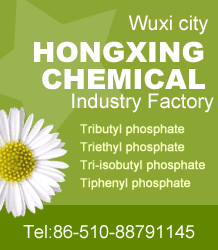Home > Offer to Sell > Fragrances and Aroma chemicals > Essential oils and others > P-Hydroxycinnamic Acid
P-Hydroxycinnamic Acid
Inquiry
| Post Date: | Dec 18,2019 |
| Expiry Date: | Dec 17,2020 |
| Detailed Description: |
Cas No. :7400-08-0
Alias: 3-(4-hydroxyphenyl)-2- acrylic acid;Trans-4-hydroxy cinnamic acid;Trans-4-hydroxycinnamic acid;P-hydroxyphenylacrylic acid;4-hydroxycinnamic acid;P-hydroxycinnamic acid; The coumaric acid
English name: p - Hydroxy - cinnamic acid English alias :(2E)-3-(4-hydroxyphenyl) probe-2-enoic acid;4 - hydroxycinnamic acid;3 - (4 - Hydroxyphenyl) acrylic acid;P - Hydroxy - cinnamic acid;P - Coumaric acid;3 - (4 - Hydroxyphenyl) - 2 - propenoic acid;2 - (4 - hydroxyphenyl) prop - 2 - enoic acid CAS No.: 7400-08-0 Formula: C9H8O3 Molecular Weight: 164.16 EINECS: 231-000-0 Purity: ≥99% Appearance: White or light yellow powder Density: 1.07 Melting point: 218-221℃ Solubility: Soluble in thermo ether, thermo ethanol, slightly soluble in benzene, insoluble in petroleum ether, insoluble in water. Application: 1. Medicine It can be used in the synthesis of rhododendrine, an expectorant new drug.It has the function of inhibiting cervical cancer.It can also be used to synthesize the adrenergic drug ethylol. 2. Agriculture It is used in the pesticide industry to produce plant growth promoters, long-term fungicides and fresh-keeping preservatives of fruits and vegetables.In addition, p-hydroxycinnamic acid can also be used as a chemical reagent for the determination of uranium and hunger. 3. Cosmetics Hydroxycinnamic acid can inhibit the activity of tyrosinase monophenolase and diphenylase, resulting in a 50% reduction in the activity of monophenylase and diphenylase, and inhibiting the production of melanin in cosmetics. 4. Chemical industry 1) it is a very important flavor for hydroxyl cinnamic acid. The permitted use of spices is mainly used to prepare spices such as fragrant cherries, apricots and honey.In the daily chemical industry used to prepare soap and cosmetics fragrance. 2) p-hydroxycinnamic acid is also a strong conductive material, which has been widely studied in the LCD industry in recent years.The photosensitive p-hydroxypolyimide was synthesized by the graft reaction of hydroxypolyimide and p-hydroxycinnamic acid.The synthesis of p-hydroxypolyimide as liquid-crystal oriented layer is used in the liquid crystal display device, which proves that it has good thermal stability. Liquid crystal display applications Nowadays, liquid crystal display (LCD) has replaced the CRT traditional display as the main display device.However, although the liquid crystal display technology is increasingly mature, it is still not perfect. The main reasons are that the liquid crystal orientation layer material, as the key material of liquid display, is generally of low thermal stability, poor electrical conductivity and weak photosensitivity.The liquid-oriented layer directly affects the performance and service life of the LCD. The thermal stability of the material of the liquid-oriented layer is not good, which can easily cause the black screen of the liquid display mobile phone and automatically shut down.Computer liquid display screen black screen, repeated automatic switch;LCD TV screen, automatic platform, and other failures to shorten the service life of devices.In order to optimize the performance of liquid display devices, the best solution is to develop a new material with both good orientation to the liquid crystal and good thermal stability at the liquid crystal phase transition temperature.Many foreign authoritative research institutions have made great efforts to explore this, but they have been searching for years without success. Based on orientation technology, there are many kinds of polymer materials used in liquid crystal orientation layer, among which polyimide (PI) is the most commonly used liquid crystal orientation layer functional material.This is because PI has such excellent characteristics as high temperature resistance, corrosion resistance, high hardness, easy film formation and low production cost, which can well meet the industry's requirements on the characteristics of oriented layer materials.Since the display is a kind of equipment with high current, high power and high heat, the thermal stability of the device is crucial, which is exactly the weakness of PI. |
| CAS Registry Number: | 7400-08-0 |
| Synonyms: | ;(2E)-3-(4-hydroxyphenyl)prop-2-enoic acid;4-hydroxycinnamic acid;3-(4-Hydroxyphenyl)acrylic acid;p-Hydroxy-cinnamic acid;p-Coumaric acid;3-(4-Hydroxyphenyl)-2-propenoic acid;2-(4-hydroxyphenyl)prop-2-enoic acid;trans-p-Hydroxycinnamic acid;trans-P-coumaric acid crystalline;trans-4-Hydroxycinnamic acid;trans-4-Hydroxyphenylpropenoic Acid;trans-Coumaricacid,98%;trans-p-Coumaric acid;3-(4-hydroxyphenyl)prop-2-enoic acid;(2E)-3-(4-hydroxyphenyl)prop-2-enoate; |
| Molecular Formula: | C9H8O3 |
| Molecular Weight: | 164.158 |
| Molecular Structure: | 
|
| Hazard Symbols: |  Xi:Irritant; Xi:Irritant; |
| Risk Codes: | R36/37/38:; |
| Safety Description: | S22:; S26:; S36/37/39:; |
| Company: | Wuhan LANDMARK Industrial Co., Ltd [ China ] |
| Contact: | Halsey |
| Tel: | 18062529653 |
| Fax: | |
| Email: | Halsey.lmd@gmail.com |
-
Disclaimer statement:The information and data included above have been realized by the enterprises and compiled by the staff, and are subject to change without notice to you. The Chemnet makes no warranties or representations whatsoever regarding the facticity, accuracy and validity of such information and data. In order to ensure your interest, we suggest you chose the products posted by our gold suppliers or VIP members.


